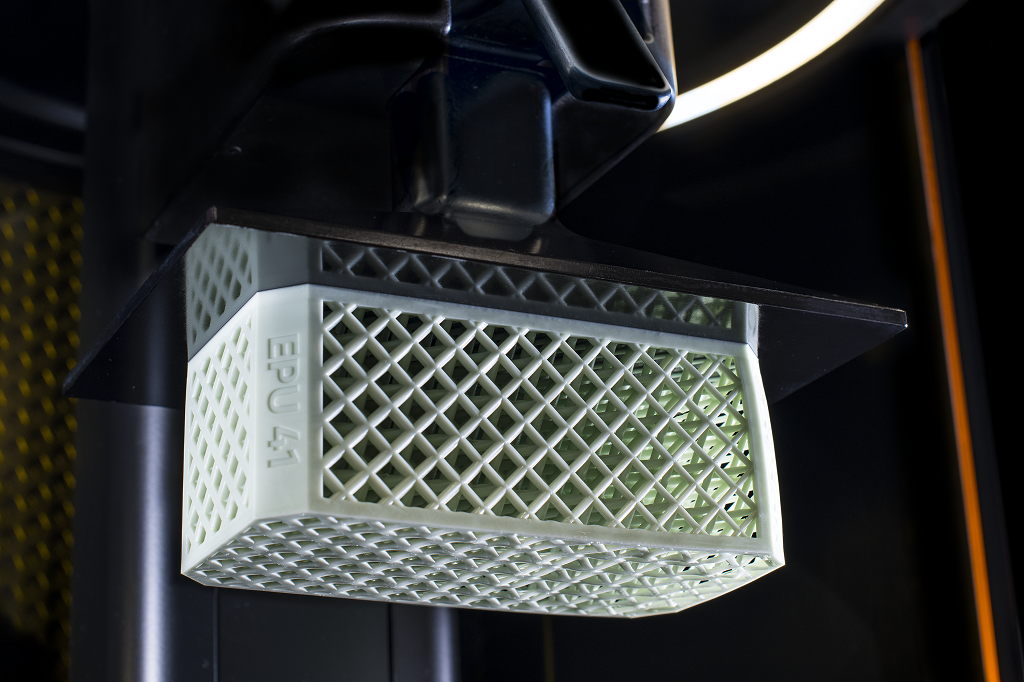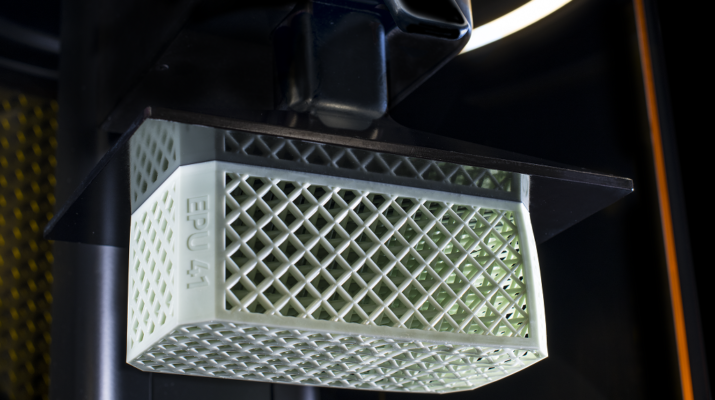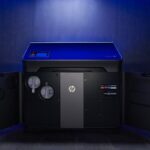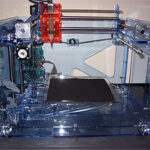

Carbon may be known for its groundbreaking DLS technology, but its materials are an important part of that technology as the company understands the importance of a full ecosystem approach. Carbon’s customizable, production-grade resins were among the first to make plastic 3D printing a production rather than just a prototyping technology.
Today, the company announces two new materials: Epoxy (EPX) 82 and Elastomeric Polyurethane (EPU) 41.
“The world’s most innovative companies are adopting digital 3D Manufacturing and Carbon is helping accelerate this growth through our expanding portfolio of production-ready materials,” said Jason Rolland, Vice President of Materials at Carbon. “At Carbon, we are constantly pushing the boundaries to create solutions for producing more durable, higher quality end-use parts. The introduction of EPX 82 and EPU 41 is a testament to this, and further validates our vision to fundamentally change how the world designs, engineers, makes, and delivers products.”
EPX 82 is a high-strength engineering material with good impact strength and a heat deflection temperature of 125°C. It’s well-suited for applications that require a balance of strength, toughness and thermo-cycling durability, such as connectors, brackets and housings in the automotive and industrial sectors. Its mechanical properties are comparable to lightly glass-filled thermoplastics and meet USCAR-2 fluid compatibility standards.
- T2 electrical connector made with EPX 82
- T2 electrical connector made with EPX 82
- Topology optimized lever made with EPX 82 used in auto and industrial load-bearing functional parts
“When selecting a material for the production of electrical connector housings, it is critical that the material is tough and allows for flex-features to perform adequately, yet stiff enough to yield strong, thin-walled geometries,” said Jerry Rhinehart, Manager of Additive Manufacturing Development, Aptiv (formerly Delphi). “These mechanical properties must also be maintained as the connector withstands harsh environmental conditions, including temperature-humidity cycling and exposure to caustic chemicals. Carbon’s newly released EPX 82 provides a level of performance that allows us to tackle the USCAR-2 T2 temperature class of connection systems. Our confidence in this material enables our product development engineers to free their minds from the design constraints imposed by traditional manufacturing processes, paving the way for the creation of connectors that outperform their injection-molded counterparts by adding value through geometric complexity.”

EPU 41 is the latest in Carbon’s family of elastomeric materials, which also includes SIL 30 and EPU 40. It can produce elastomeric lattice geometries that can outperform traditional foams. Compared to EPU 40, it has higher resilience and room and low temperatures, and its properties include good tear strength, elongation and energy return, making it a good choice for applications requiring cushioning, impact absorption, and comfort. It also performs well in functional testing, including fatigue, hydrolysis, UV-stability, and plastic deformation tests.
- Printing of lattice puck made with EPU 41 used for consumer applications such as helmets, gloves, shin guards
EPU 41 is offered only in five-liter bulk packaging, and is the second material after RPU 70 to be offered under Carbon’s production-scale materials pricing of $150 per liter. It requires an MMD (meter, mix and dispense) device for proper dispensing of the material in bulk quantities.
The two new resins are currently available to North American customers; information about global availability will be forthcoming at a later date.
Carbon will be at NPE next week, which is taking place from May 7th to May 11th in Orlando, Florida. If you’re attending, you can visit Carbon and learn more about its new materials at Booth #S24160.
Discuss this and other 3D printing topics at 3DPrintBoard.com or share your thoughts below.
[Images: Carbon]
When it comes to 3D real estate visualization in the USA, our service provides the perfect solution for bringing property listings to life. Through our platform, you can easily access cutting-edge 3D renderings that showcase your real estate projects in a way that attracts potential buyers and investors. Whether it's residential, commercial, or mixed-use properties, our team of experts uses advanced technology to create immersive visualizations that highlight the best features of your property, making it easier for clients to imagine the space as their own.
Through our website, you can quickly get high-quality 3D real estate visualizations that are tailored to your specific needs. With our help, you'll stand out in the competitive real estate market by offering potential buyers a realistic, interactive view of your property. Our efficient process ensures a fast turnaround time, while our attention to detail guarantees that every aspect of the property is represented accurately, giving you a powerful marketing tool to promote your real estate listings.






